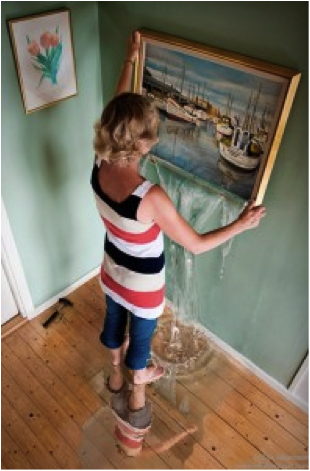Finding the Adjacent Possible
 Whatever field you work in, your expertise is expected, it’s a given. So too your diligence. It is your initiative and creative ability to bring unique and signature solutions to solve unexpected problems that is your brand, and increasingly your company’s brand and identity. The question is how to find it? Or a better question – how can we create collaborative learning environments where we can have new ideas on a regular basis? Not in a mechanized on-demand sort of way, but rather create an ecosystem which encourages exploration of the adjacent possible. More on that cool concept here from Steven Johnson.
Whatever field you work in, your expertise is expected, it’s a given. So too your diligence. It is your initiative and creative ability to bring unique and signature solutions to solve unexpected problems that is your brand, and increasingly your company’s brand and identity. The question is how to find it? Or a better question – how can we create collaborative learning environments where we can have new ideas on a regular basis? Not in a mechanized on-demand sort of way, but rather create an ecosystem which encourages exploration of the adjacent possible. More on that cool concept here from Steven Johnson.
Bill Taylor’s new book, Practically Radical, talks about three key elements to drive successful innovation:
- To become the ‘most of something’. Check out the most successful organizations and people. They are all the most of something. There is no place in today’s high-pressured, rapidly-changing, killer-competitive world for anything less
- To embrace a sense of vuja dé. Vuja dé is looking at a familiar situation as if you are seeing it for the very first time. This instantly opens up limitless imagination, and fresh insights and ideas
- To look for fresh, new ideas in new places. Never compare yourself with what or who is considered best in your field. Learn from people and organizations that are way outside your field
If Bill is right (and I think he is) this has implications for how we develop learning environments for people in our organizations. The future of learning is must be to provide conceptual and powerful learning opportunities; opportunities which offer insight, ideas, and parables intended for inference and application by the learner. The outcomes of this kind of learning are quite unexpected, and by its very nature, bring in fresh insights and solutions. This is what makes the whole learning experience unique and beautiful.
To create the shift to conceptual learning, is to essentially balance the spoon-fed, outcome-anticipated, specific-competence results-oriented learning environments with more conceptual learning environments. This will treat learners as ready and able to distill ideas into their own signature integrated solutions, which are applicable for their line of work both internal and external. Success ensures that the experience is meaningful. This will then bring about the total shift to conceptual learning.
Tom Kelley, CEO of IDEO, a premier product and services innovation company, has been a long advocate of this approach. In his book, The Ten Faces of Innovation, he describes a particular persona called the “Cross-Pollinator”. Cross-Pollinators are those people who are inquisitive beyond their particular domain expertise and explore ideas from industries outside their immediate purview. They understand and learn the technology, device or methods employed elsewhere and figure out how to incorporate these ideas into their own work.
Go. Find the adjacent possible.

